Geographical Distribution and Modeling of the Impact of Women Driving Cars on the Sustainable Development of Saudi Arabia
Abstract
:1. Introduction
2. Materials and Methods
2.1. Survey Design
2.2. Participants’ Sociodemographic Characteristics
2.3. Statistical Analysis and Modeling
3. Results and Discussions
3.1. Social Impacts
- “SOC-6—Women are capable of taking driving responsibilities”, for which men are neutral (3.49) and women agree (4.37).
- “SOC-9—Women might be afraid to drive”, with men neutral (2.69), while women disagree (2.27).
- “SOC-11—The time women spend driving will distract them from completing other tasks”, where men are neutral (2.70) while women disagree (2.31).
- “SOC-12—Driving will make women want to show off their cars”, for which men are neutral (3.04), whereas women disagree (2.45).
- “SOC-13—I am afraid that women will be abused while driving”, with men neutral (2.94), while women disagree (2.12).
| Category | Wave I | Wave II | ||||||||
|---|---|---|---|---|---|---|---|---|---|---|
| M/F * | Mean | STD | Skewness | Kurtosis | M/F * | Mean | STD | Skewness | Kurtosis | |
| SOC-1 | 0.90 | 3.92 | 1.54 | −1.02 | −0.61 | 0.92 | 4.63 | 0.74 | −2.50 | 7.19 |
| SOC-2 | 0.95 | 3.94 | 1.51 | −1.04 | −0.50 | 0.90 | 4.47 | 0.91 | −1.95 | 3.63 |
| SOC-3 | 0.96 | 3.59 | 1.48 | −0.55 | −1.09 | 0.91 | 4.32 | 0.90 | −1.36 | 1.59 |
| SOC-4 | 0.93 | 3.62 | 1.57 | −0.62 | −1.17 | 0.89 | 4.37 | 0.97 | −1.66 | 2.30 |
| SOC-5 | 0.95 | 3.23 | 1.64 | −0.22 | −1.53 | 0.85 | 3.72 | 1.27 | −0.61 | −0.74 |
| SOC-6 | 0.85 | 3.65 | 1.55 | −0.67 | −1.10 | 0.79 | 4.27 | 1.02 | −1.48 | 1.57 |
| SOC-7 | 0.89 | 4.07 | 1.42 | −1.23 | 0.00 | 0.88 | 4.49 | 0.86 | −1.96 | 3.84 |
| SOC-8 | 1.03 | 2.66 | 1.66 | 0.35 | −1.51 | 1.11 | 2.46 | 1.29 | 0.52 | −0.82 |
| SOC-9 | 1.19 | 2.59 | 1.53 | 0.39 | −1.28 | 1.14 | 2.35 | 1.21 | 0.57 | −0.64 |
| SOC-10 | 1.12 | 2.83 | 1.63 | 0.17 | −1.54 | 1.16 | 2.56 | 1.28 | 0.37 | −0.95 |
| SOC-11 | 1.17 | 2.60 | 1.61 | 0.40 | −1.41 | 1.14 | 2.39 | 1.26 | 0.60 | −0.70 |
| SOC-12 | 1.15 | 2.99 | 1.61 | 0.01 | −1.54 | 1.23 | 2.45 | 1.26 | 0.47 | −0.82 |
| SOC-13 | 1.21 | 2.85 | 1.58 | 0.16 | −1.47 | 1.42 | 2.15 | 1.19 | 0.80 | −0.32 |
| SOC-14 | 0.93 | 4.02 | 1.44 | −1.15 | −0.20 | 0.92 | 4.39 | 1.03 | −1.95 | 3.25 |
3.2. Economic Impacts
- “ECO-1—Women driving might contribute to achieving the objectives of Vision 2030”, which men agree (3.95) and women agree/completely agree (4.55).
- “ECO-2—Women driving might contribute to increasing income rates in the Kingdom”, where men’s and women’s average response scores are 3.79 and 4.35, respectively.
- “ECO-4—Women driving might increase female’s empowerment in the Kingdom”, on which women’s agreement level (4.53) is more than those of men (3.92).
3.3. Environmental Impacts
4. Conclusions
Author Contributions
Funding
Institutional Review Board Statement
Informed Consent Statement
Data Availability Statement
Acknowledgments
Conflicts of Interest
References
- Wheeler, D.L. Saudi Women Driving Change? Rebranding, Resistance, and the Kingdom of Change. J. Middle East Afr. 2020, 11, 87–109. [Google Scholar] [CrossRef]
- Najah, B.; Moqbel, B.; Qarawi, A.; Kamargianni, M. She Drives KSA: Phase 1 Survey Report; Imam Abdulrahman Bin faisal University: Dammam, Saudi Arabia, 26 September 2018. [Google Scholar]
- Kamargianni, M. She Drives KSA: Phase 2 Survey Results; Imam Abdulrahman Bin faisal University: Dammam, Saudi Arabia, February 2020; pp. 1–154. [Google Scholar]
- Elyas, T.; Al-Zhrani, K.A.; Mujaddadi, A.; Almohammadi, A. The representation(s) of Saudi women pre-driving era in local newspapers and magazines: A critical discourse analysis. Br. J. Middle East. Stud. 2020, 1–20. [Google Scholar] [CrossRef]
- Jarbou, R. Know your enemy: The Saudi women’s driving campaign from flyers and faxes to Youtube and hashtags. Fem. Media Stud. 2018, 18, 321–325. [Google Scholar] [CrossRef]
- Williams, S.; Qiu, W.; Al-awwad, Z.; Alfayez, A. Commuting for women in Saudi Arabia: Metro to driving-Options to support women employment. J. Transp. Geogr. 2019, 77, 126–138. [Google Scholar] [CrossRef]
- Khalil, A.; Storie, L.K. Social media and connective action: The case of the Saudi women’s movement for the right to drive. New Media Soc. 2020, 18, 80–100. [Google Scholar] [CrossRef]
- Ahmed, Z. Saudi Arabia women boost the automotive industry. In International Trade Administration, Market Intelligence. Available online: https://www.trade.gov/market-intelligence/saudi-arabia-women-boost-automotive-industry (accessed on 1 September 2021).
- Mohamed, M.; Bromfield, N.F. Attitudes, driving behavior, and accident involvement among young male drivers in Saudi Arabia. Transp. Res. Part F Traffic Psychol. Behav. 2017, 47, 59–71. [Google Scholar] [CrossRef]
- Rajkhan, S.F. Women in Saudi Arabia: Status, Rights, and Limitations; University of Washington Bothell: Bothell, WA, USA, 2014. [Google Scholar]
- Cubells, J.; Marquet, O.; Miralles-Guasch, C. Gender and age differences in metropolitan car use. Recent gender gap trends in private transport. Sustainability 2020, 12, 7286. [Google Scholar] [CrossRef]
- Hendriks, S. The role of financial inclusion in driving women’s economic empowerment. Dev. Pract. 2019, 29, 1029–1038. [Google Scholar] [CrossRef] [Green Version]
- Vinz, D. Gender and sustainable consumption: A german environmental perspective. Eur. J. Women’s Stud. 2009, 16, 159–179. [Google Scholar] [CrossRef]
- Taubman-Ben-Ari, O.; Lotan, T. The contribution of a novel intervention to enhance safe driving among young drivers in Israel. Accid. Anal. Prev. 2011, 43, 352–359. [Google Scholar] [CrossRef] [PubMed]
- Özkan, T.; Lajunen, T. What causes the differences in driving between young men and women? The effects of gender roles and sex on young drivers’ driving behaviour and self-assessment of skills. Transp. Res. Part F Traffic Psychol. Behav. 2006, 9, 269–277. [Google Scholar] [CrossRef]
- Hilgarter, K.; Granig, P. Public perception of autonomous vehicles: A qualitative study based on interviews after riding an autonomous shuttle. Transp. Res. Part F Traffic Psychol. Behav. 2020, 72, 226–243. [Google Scholar] [CrossRef]
- Shirgaokar, M.; Lanyi-Bennett, K. I’ll have to drive there: How daily time constraints impact women’s car use differently than men’s. Transportation 2020, 47, 1365–1392. [Google Scholar] [CrossRef]
- Al-Garawi, N.; Dalhat, M.A.; Aga, O. Assessing the Road Traffic Crashes among Novice Female Drivers in Saudi Arabia. Sustainability 2021, 13, 8613. [Google Scholar] [CrossRef]
- GASTAT. Population of Saudi Arabia by Age Groups and Gender; General Authority for Statistics of Saudi Arabia: Riyadh, Saudi Arabia, 2019.
- Yang, H. The Case for Being Automatic: Introducing the Automatic Linear Modeling (LINEAR) Procedure in SPSS Statistics. Mult. Linear Regres. Viewp. 2013, 39, 27–37. [Google Scholar]
- Cleophas, T.J.; Zwinderman, A.H. Automatic Linear Regression (35 Patients). In SPSS for Starters and 2nd Levelers; Springer International Publishing: Cham, Switzerland, 2016; pp. 35–40. [Google Scholar]
- GASTAT. Bulletin Gender Statistics; General Authority for Statistics of Saudi Arabia: Riyadh, Saudi Arabia, 2020.
- Daoud, Z. Saudi Arabia Insight: Women driving may reap more than Aramco. Bloomberg. Available online: https://www.bloomberg.com/professional/blog/saudi-arabia-insight-women-driving-may-reap-aramco (accessed on 1 September 2021).
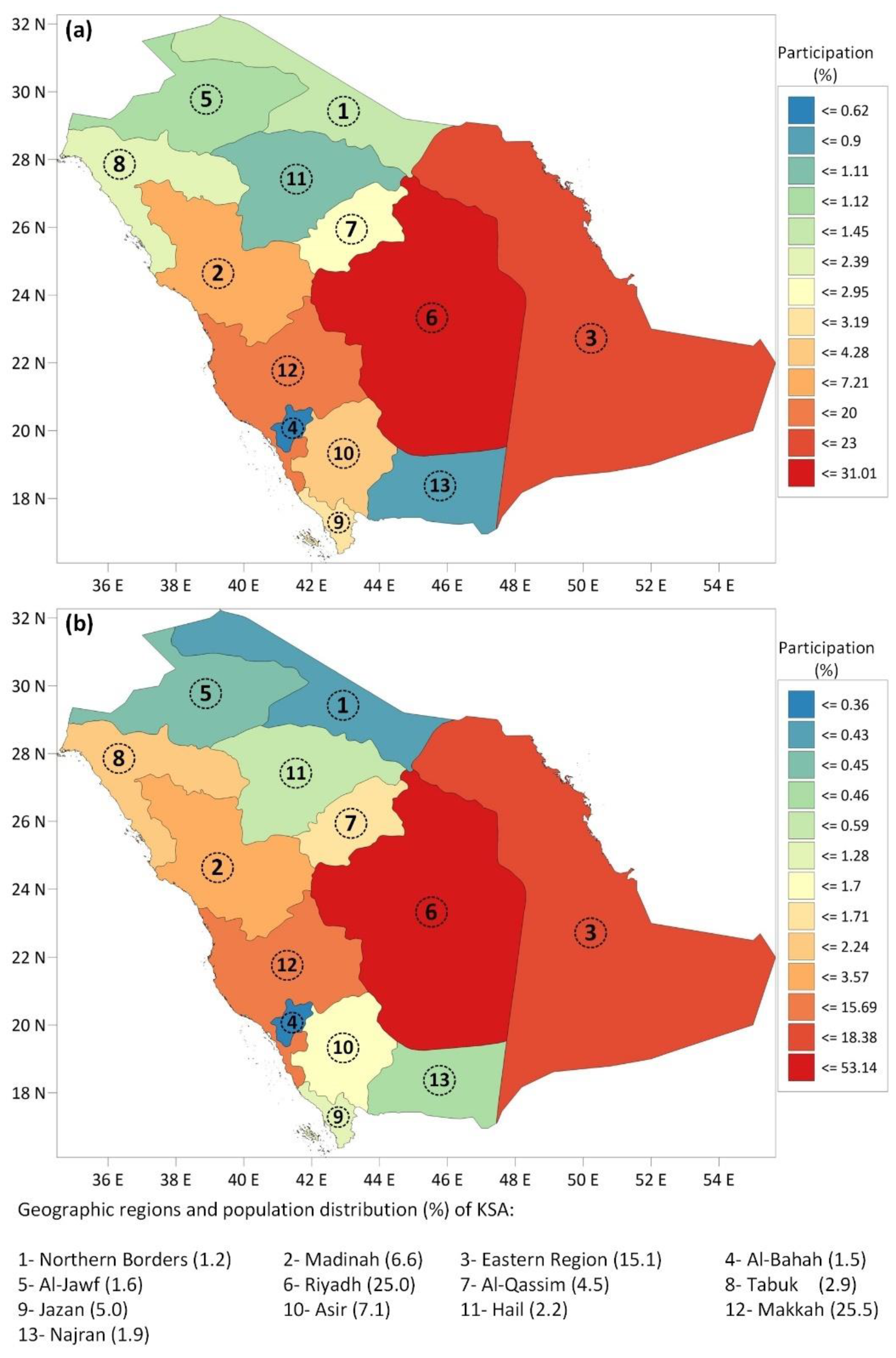
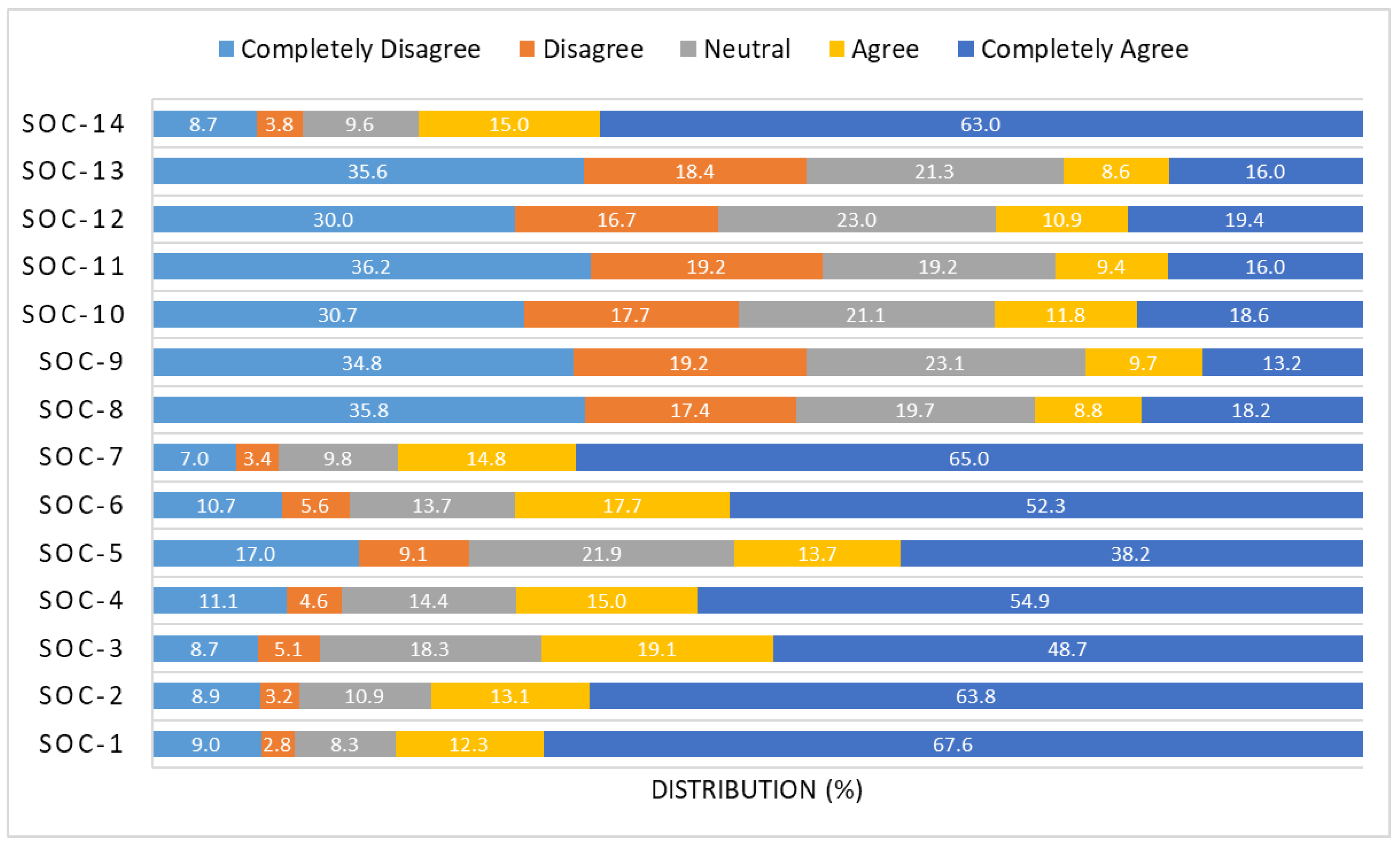
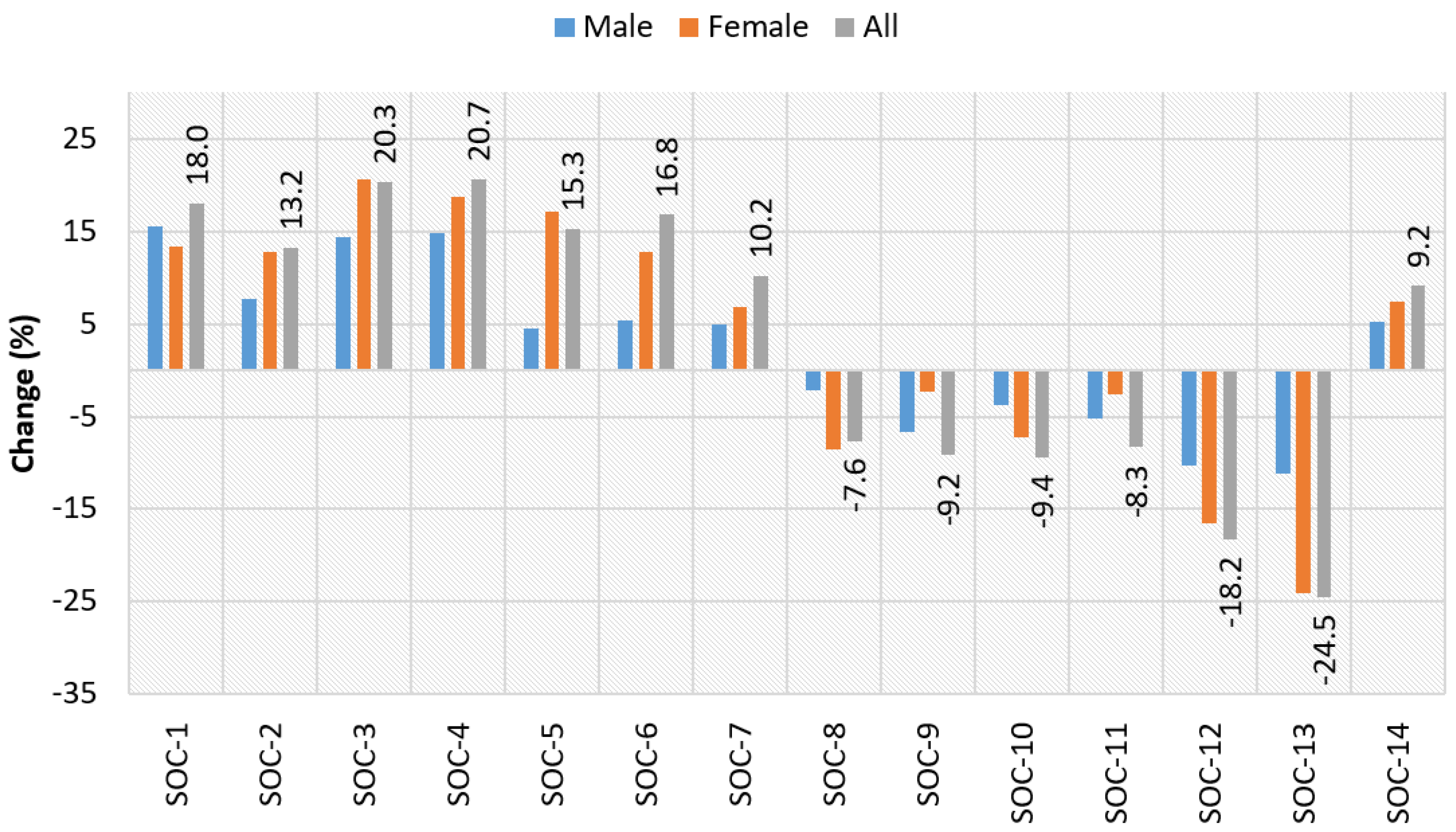

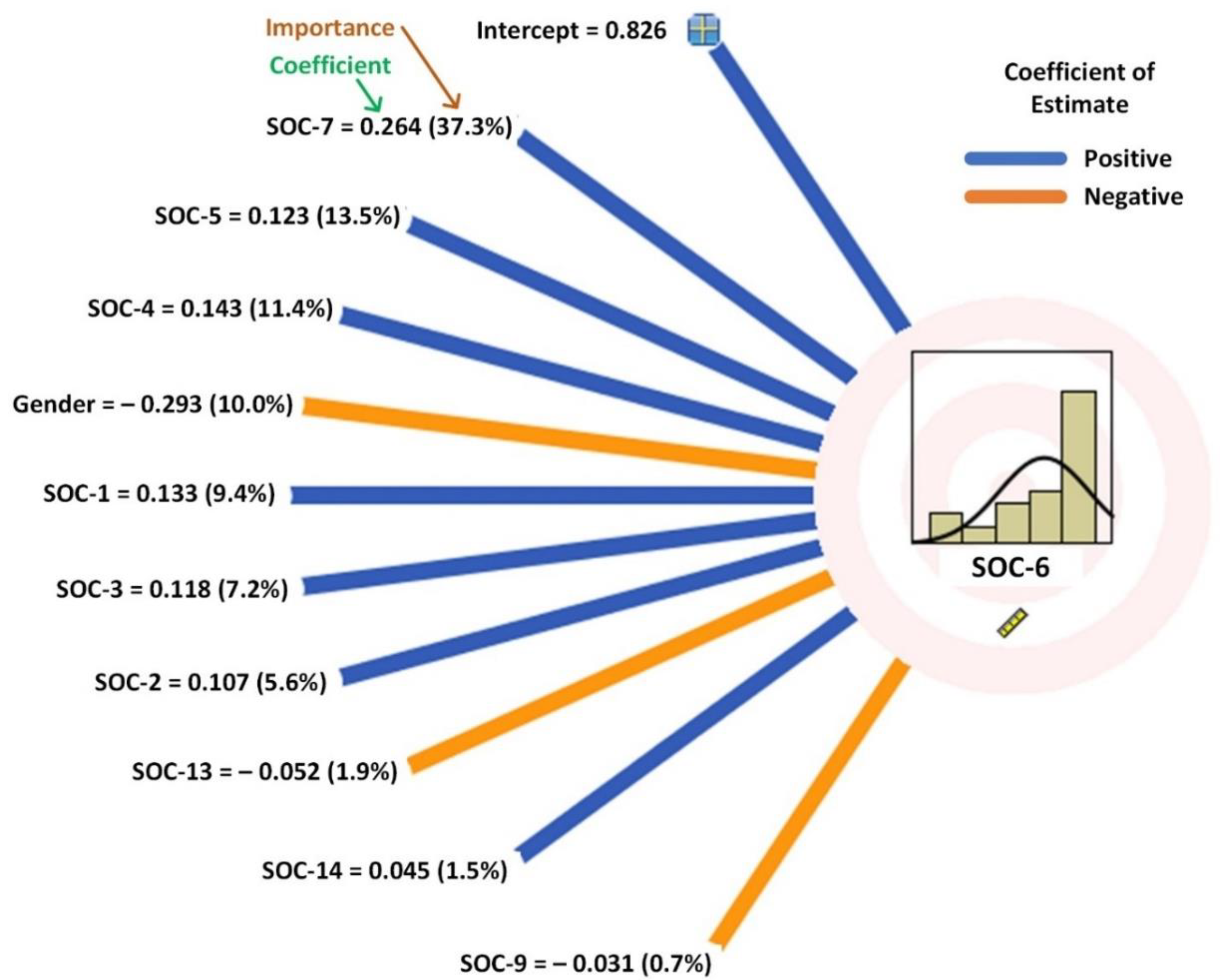
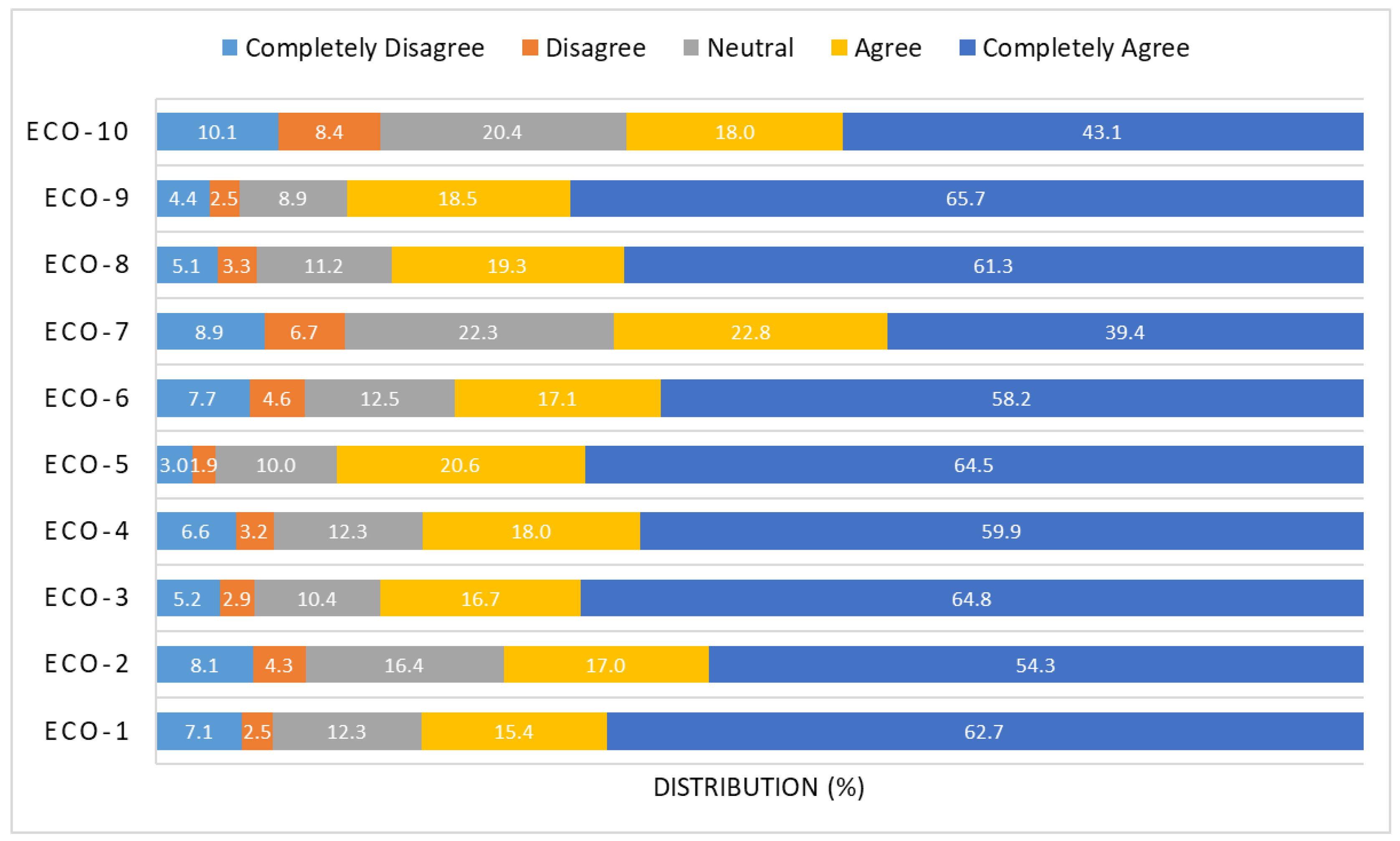
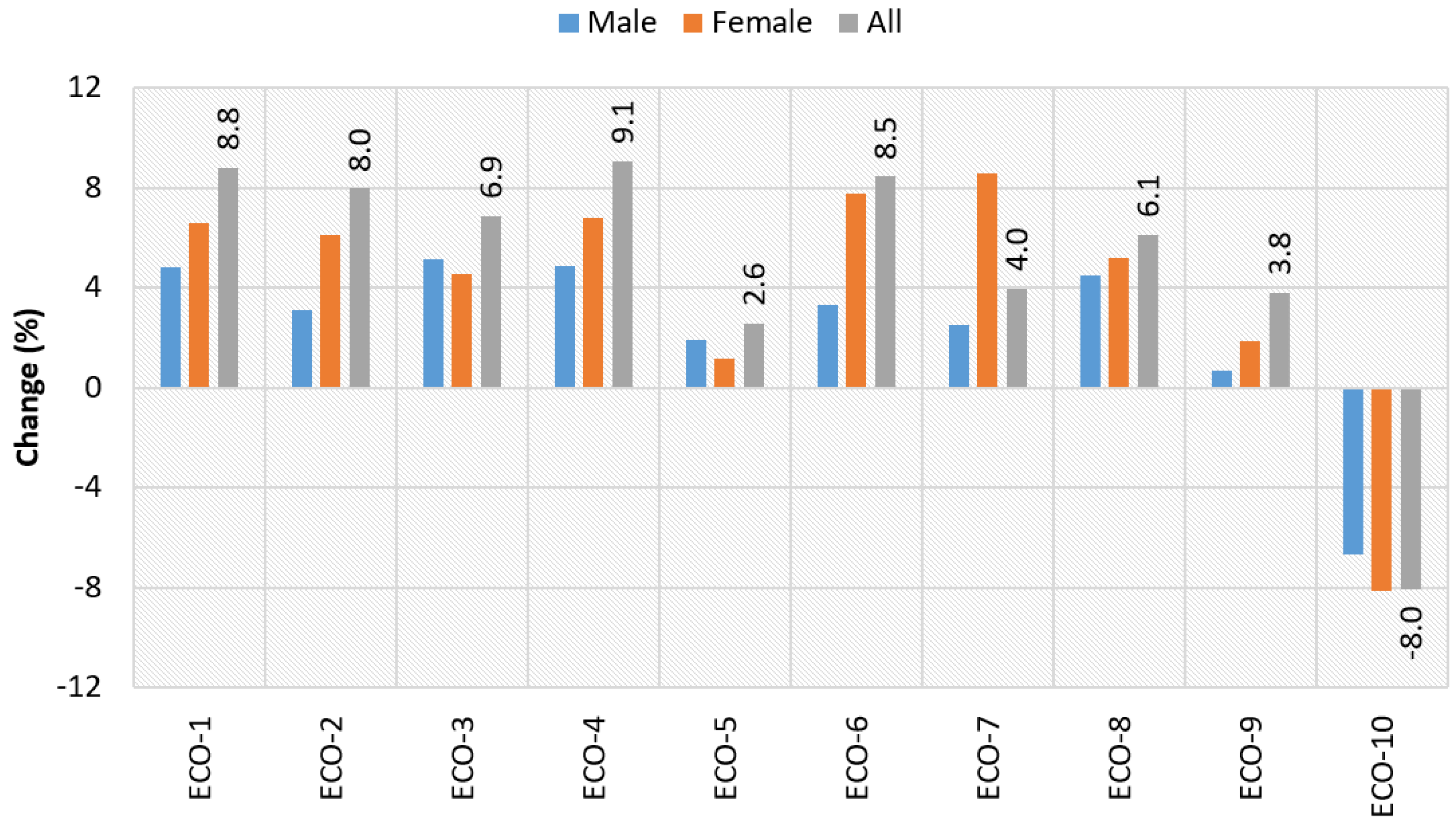
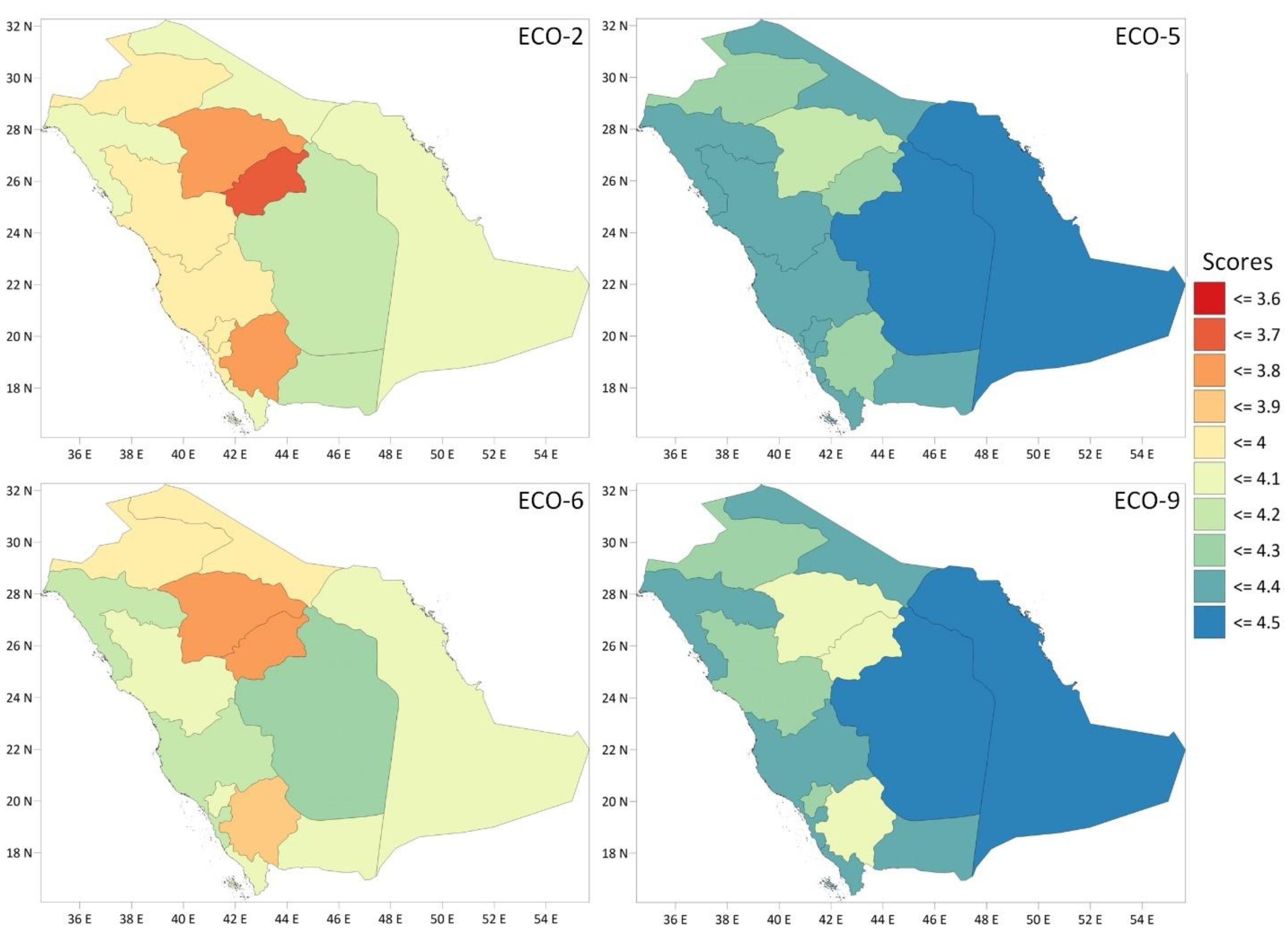
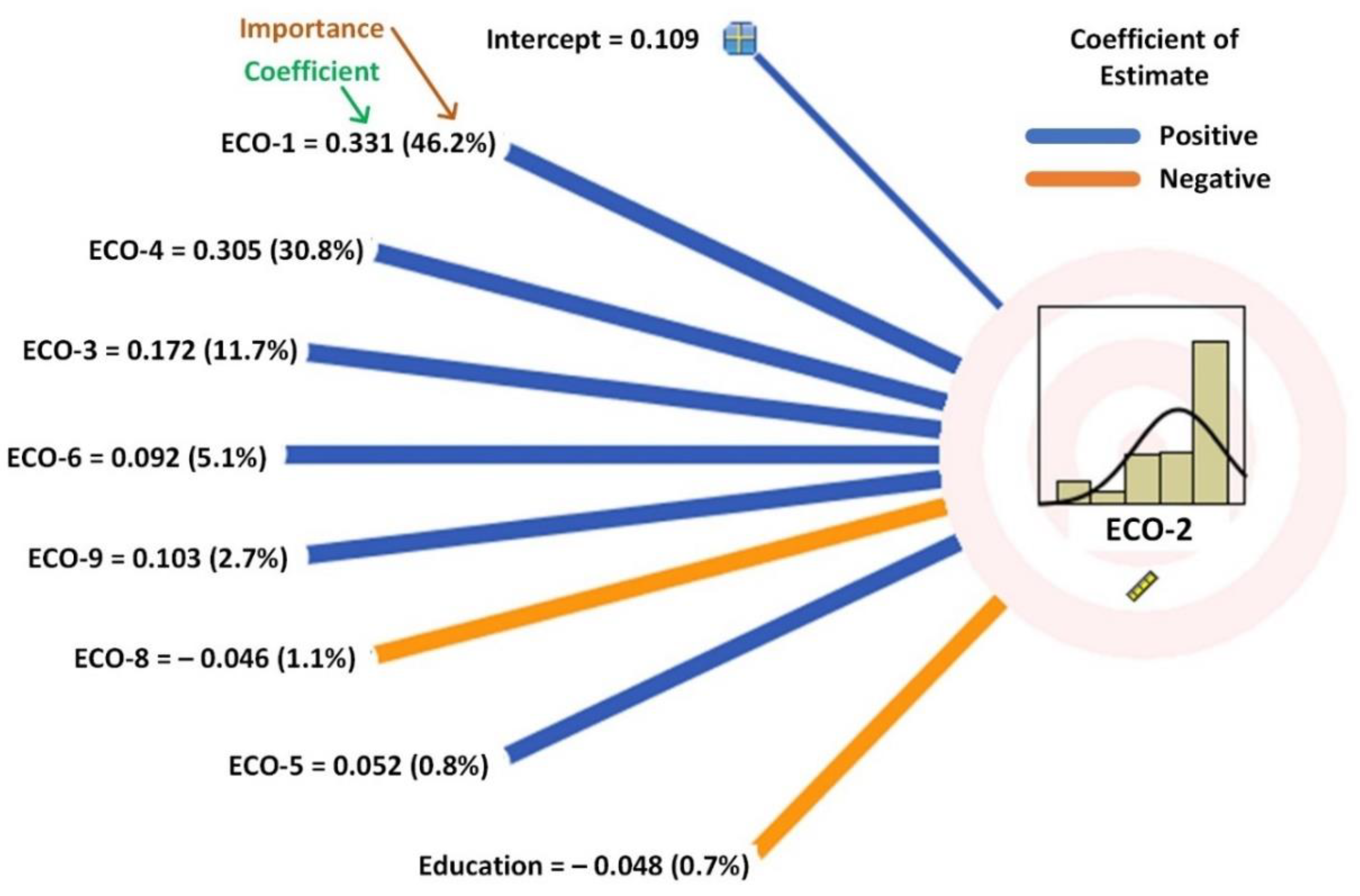

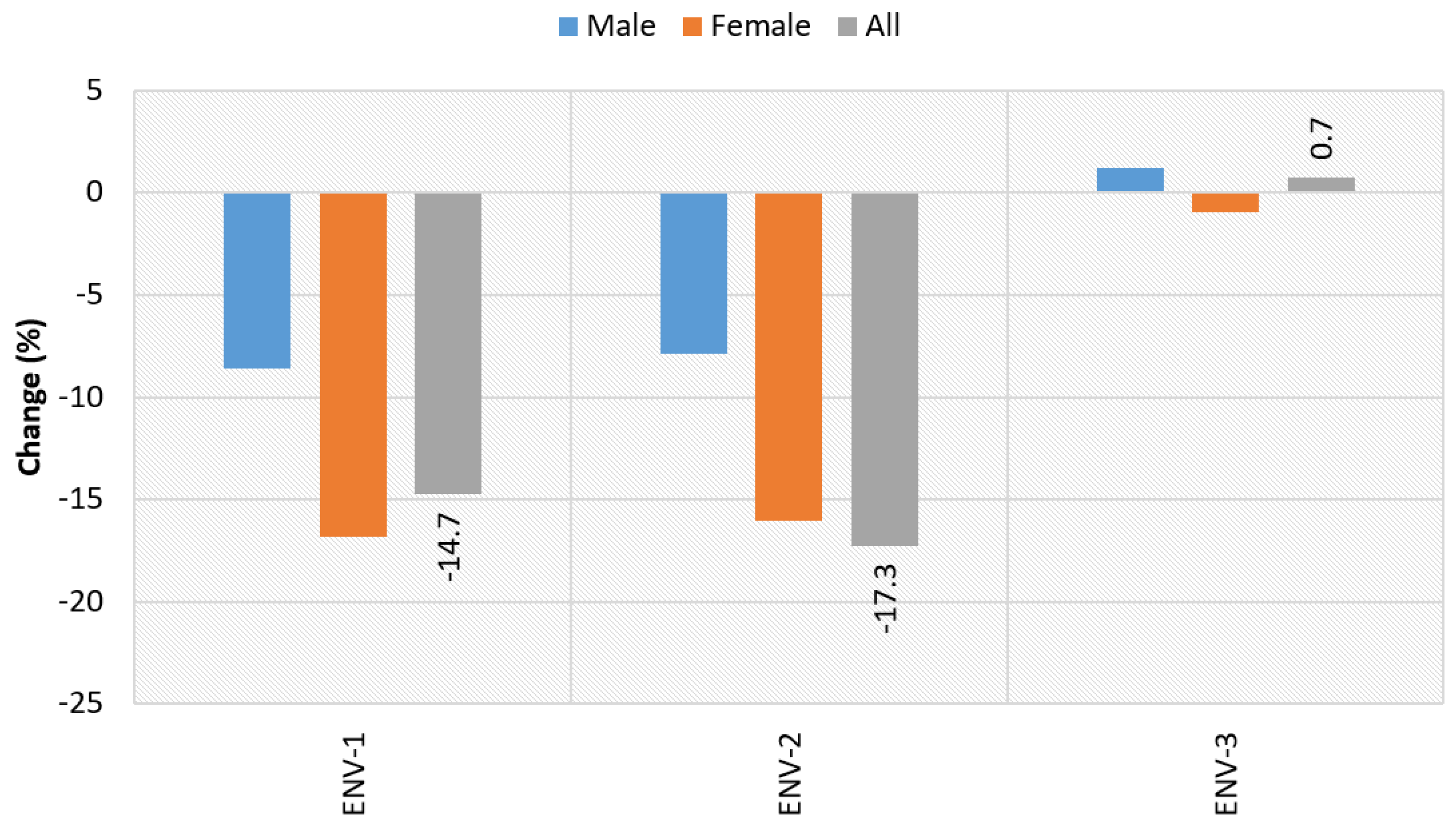
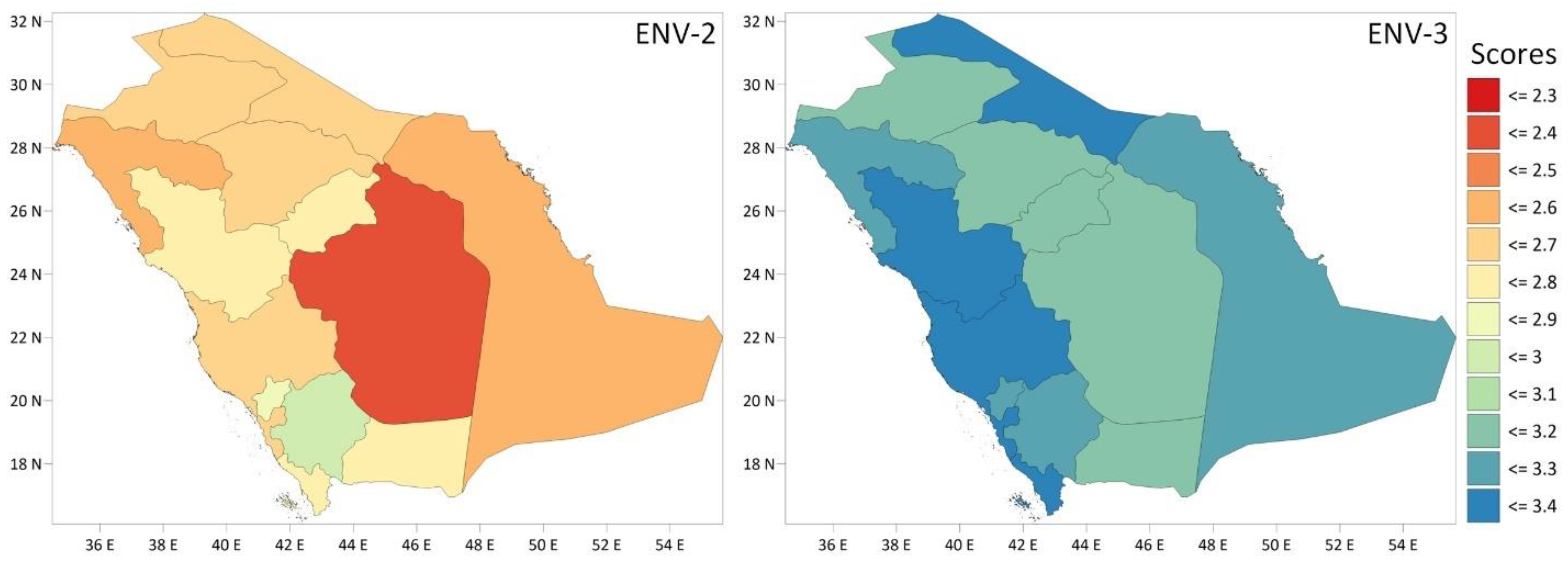
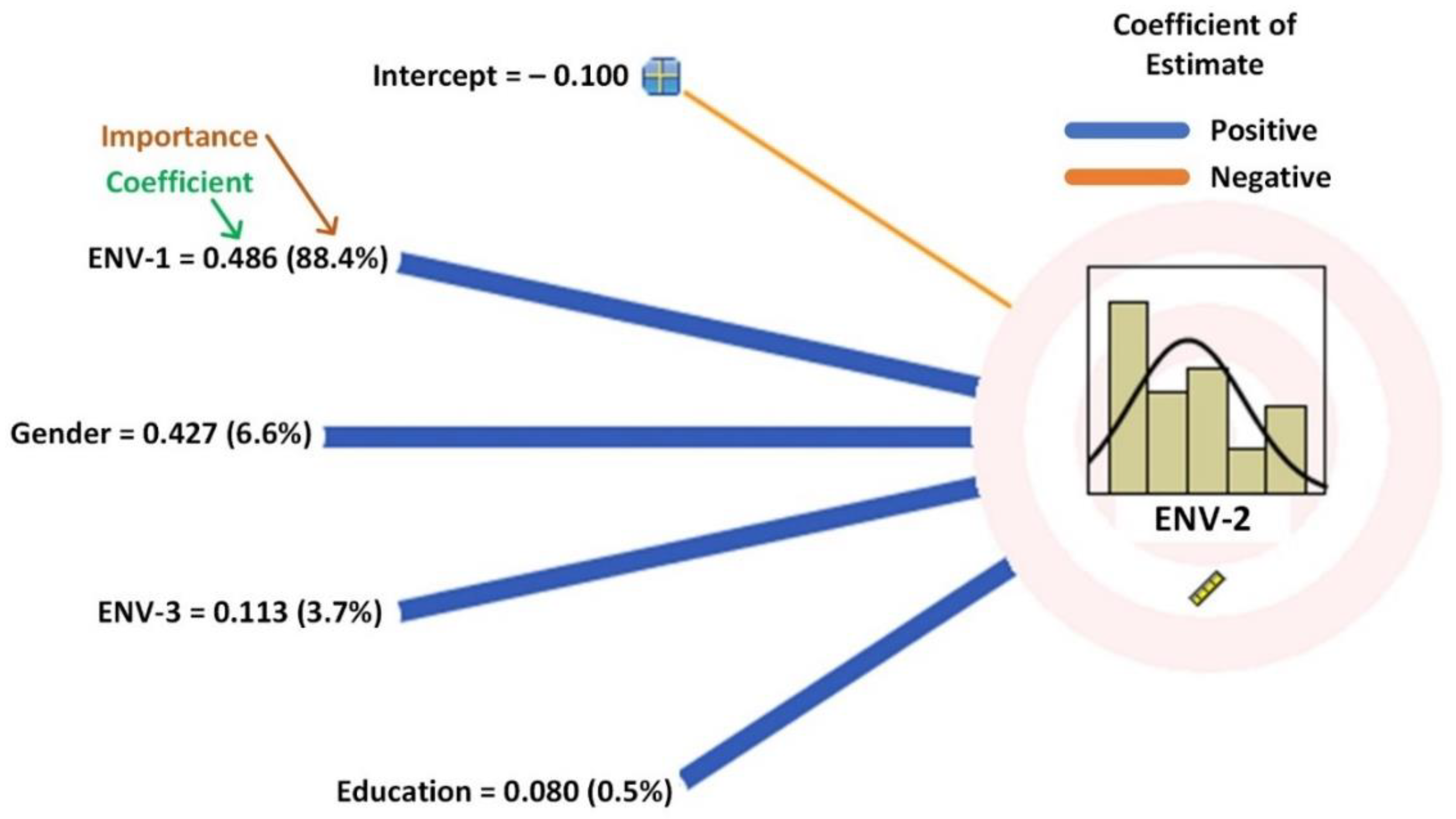
| Category | Statement | Scale |
|---|---|---|
| Demographic | ||
| DEM-1 | Age | 1–7 |
| DEM-2 | Gender | 1–2 |
| DEM-3 | Education | 1–5 |
| DEM-4 | Employment | 1–2 |
| DEM-5 | Marital Status | 1–4 |
| Social | ||
| SOC-1 | Driving is one of women’s rights | 1–5 |
| SOC-2 | Women driving will enhance the image of Saudi Arabia to the rest of the world | 1–5 |
| SOC-3 | Women driving is socially acceptable | 1–5 |
| SOC-4 | My family encourages women to drive | 1–5 |
| SOC-5 | Driving is a status symbol for women | 1–5 |
| SOC-6 | Women are capable of taking driving responsibilities | 1–5 |
| SOC-7 | Driving will enable women to act in emergencies | 1–5 |
| SOC-8 | There is no need for women to drive because they have drivers | 1–5 |
| SOC-9 | Women might be afraid to drive | 1–5 |
| SOC-10 | Women will be overwhelmed with more household responsibilities if they drive | 1–5 |
| SOC-11 | The time women spend driving will distract them from completing other tasks | 1–5 |
| SOC-12 | Driving will make women want to show off their cars | 1–5 |
| SOC-13 | I am afraid that women will be abused while driving | 1–5 |
| SOC-14 | Driving would eliminate all the troubles accompanying employed drivers | 1–5 |
| Economic | ||
| ECO-1 | Women driving might contribute to achieving the objectives of Vision 2030 | 1–5 |
| ECO-2 | Women driving might contribute to increasing income rates in the Kingdom | 1–5 |
| ECO-3 | Women driving might reduce the volume of international labor remittances | 1–5 |
| ECO-4 | Women driving might increase female’s empowerment in the Kingdom | 1–5 |
| ECO-5 | Women driving might increase car sales of car dealerships in the Kingdom for certain types | 1–5 |
| ECO-6 | Women driving might reduce a women’s household’s monthly expenses for transportation | 1–5 |
| ECO-7 | Women driving might increase financial and legal burdens of women | 1–5 |
| ECO-8 | Women driving might reduce the number of private drivers in the Kingdom | 1–5 |
| ECO-9 | Women driving might create new female job opportunities | 1–5 |
| ECO-10 | Women driving might increase fuel consumption in the Kingdom | 1–5 |
| Environment | ||
| ENV-1 | The infrastructure is not sufficient to support women driving | 1–5 |
| ENV-2 | Women driving will contribute to increasing environmental pollution | 1–5 |
| ENV-3 | Driving would increase the number of electric cars in the Kingdom | 1–5 |
| Wave I (%) | Wave II (%) | Wave I and II (%) | ||
|---|---|---|---|---|
| Age | <18 | 1.58 | 0.61 | 1.11 |
| 18–25 | 20.7 | 22.9 | 21.7 | |
| 26–35 | 40.1 | 39.5 | 39.8 | |
| 36–45 | 26.0 | 26.7 | 26.3 | |
| 46–55 | 9.15 | 7.98 | 8.58 | |
| 56–65 | 2.16 | 2.15 | 2.16 | |
| >65 | 0.34 | 0.15 | 0.25 | |
| Gender | Male | 63.5 | 30.7 | 47.6 |
| Female | 36.5 | 69.3 | 52.4 | |
| Education | Elementary/no education | 1.91 | 0.70 | 1.32 |
| Intermediate | 4.60 | 2.05 | 3.36 | |
| Secondary/high school | 28.4 | 22.0 | 25.3 | |
| College | 53.8 | 63.3 | 58.4 | |
| Higher studies | 11.3 | 11.9 | 11.5 | |
| Employment | Employed | 64.9 | 58.7 | 61.9 |
| Non-employed | 35.1 | 41.3 | 38.1 | |
| Marital Status | Single | 33.7 | 38.9 | 36.2 |
| Married | 62.0 | 52.5 | 57.4 | |
| Divorced/widowed | 4.31 | 8.65 | 6.41 |
| Category | Wave I | Wave II | ||||||||
|---|---|---|---|---|---|---|---|---|---|---|
| M/F * | Mean | STD | Skewness | Kurtosis | M/F * | Mean | STD | Skewness | Kurtosis | |
| ECO-1 | 0.93 | 4.07 | 1.40 | −1.23 | 0.04 | 0.91 | 4.42 | 0.89 | −1.74 | 2.98 |
| ECO-2 | 0.92 | 3.90 | 1.45 | −0.97 | −0.52 | 0.90 | 4.21 | 1.01 | −1.23 | 0.94 |
| ECO-3 | 0.94 | 4.19 | 1.30 | −1.41 | 0.67 | 0.95 | 4.48 | 0.84 | −1.92 | 3.96 |
| ECO-4 | 0.92 | 4.04 | 1.39 | −1.17 | −0.04 | 0.91 | 4.40 | 0.88 | −1.68 | 2.87 |
| ECO-5 | 0.97 | 4.36 | 1.11 | −1.74 | 2.09 | 0.97 | 4.47 | 0.76 | −1.69 | 3.50 |
| ECO-6 | 0.94 | 3.97 | 1.43 | −1.07 | −0.31 | 0.91 | 4.31 | 1.00 | −1.55 | 1.85 |
| ECO-7 | 1.08 | 3.70 | 1.43 | −0.67 | −0.88 | 1.02 | 3.85 | 1.08 | −0.83 | 0.14 |
| ECO-8 | 0.97 | 4.16 | 1.28 | −1.34 | 0.55 | 0.96 | 4.42 | 0.87 | −1.77 | 3.32 |
| ECO-9 | 0.93 | 4.31 | 1.22 | −1.67 | 1.55 | 0.92 | 4.47 | 0.82 | −1.88 | 3.98 |
| ECO-10 | 1.01 | 3.91 | 1.41 | −0.95 | −0.47 | 1.03 | 3.59 | 1.27 | −0.55 | −0.73 |
| Category | Wave I | Wave II | ||||||||
|---|---|---|---|---|---|---|---|---|---|---|
| M/F * | Mean | STD | Skewness | Kurtosis | M/F * | Mean | STD | Skewness | Kurtosis | |
| ENV-1 | 1.02 | 3.45 | 1.56 | −0.44 | −1.30 | 1.12 | 2.94 | 1.30 | 0.05 | −1.12 |
| ENV-2 | 1.16 | 2.74 | 1.60 | 0.25 | −1.46 | 1.27 | 2.27 | 1.19 | 0.68 | −0.41 |
| ENV-3 | 0.97 | 3.23 | 1.46 | −0.19 | −1.22 | 0.99 | 3.25 | 1.08 | −0.19 | −0.30 |
Publisher’s Note: MDPI stays neutral with regard to jurisdictional claims in published maps and institutional affiliations. |
© 2021 by the authors. Licensee MDPI, Basel, Switzerland. This article is an open access article distributed under the terms and conditions of the Creative Commons Attribution (CC BY) license (https://creativecommons.org/licenses/by/4.0/).
Share and Cite
Al-Garawi, N.; Anil, I. Geographical Distribution and Modeling of the Impact of Women Driving Cars on the Sustainable Development of Saudi Arabia. Sustainability 2021, 13, 9941. https://doi.org/10.3390/su13179941
Al-Garawi N, Anil I. Geographical Distribution and Modeling of the Impact of Women Driving Cars on the Sustainable Development of Saudi Arabia. Sustainability. 2021; 13(17):9941. https://doi.org/10.3390/su13179941
Chicago/Turabian StyleAl-Garawi, Najah, and Ismail Anil. 2021. "Geographical Distribution and Modeling of the Impact of Women Driving Cars on the Sustainable Development of Saudi Arabia" Sustainability 13, no. 17: 9941. https://doi.org/10.3390/su13179941
APA StyleAl-Garawi, N., & Anil, I. (2021). Geographical Distribution and Modeling of the Impact of Women Driving Cars on the Sustainable Development of Saudi Arabia. Sustainability, 13(17), 9941. https://doi.org/10.3390/su13179941







